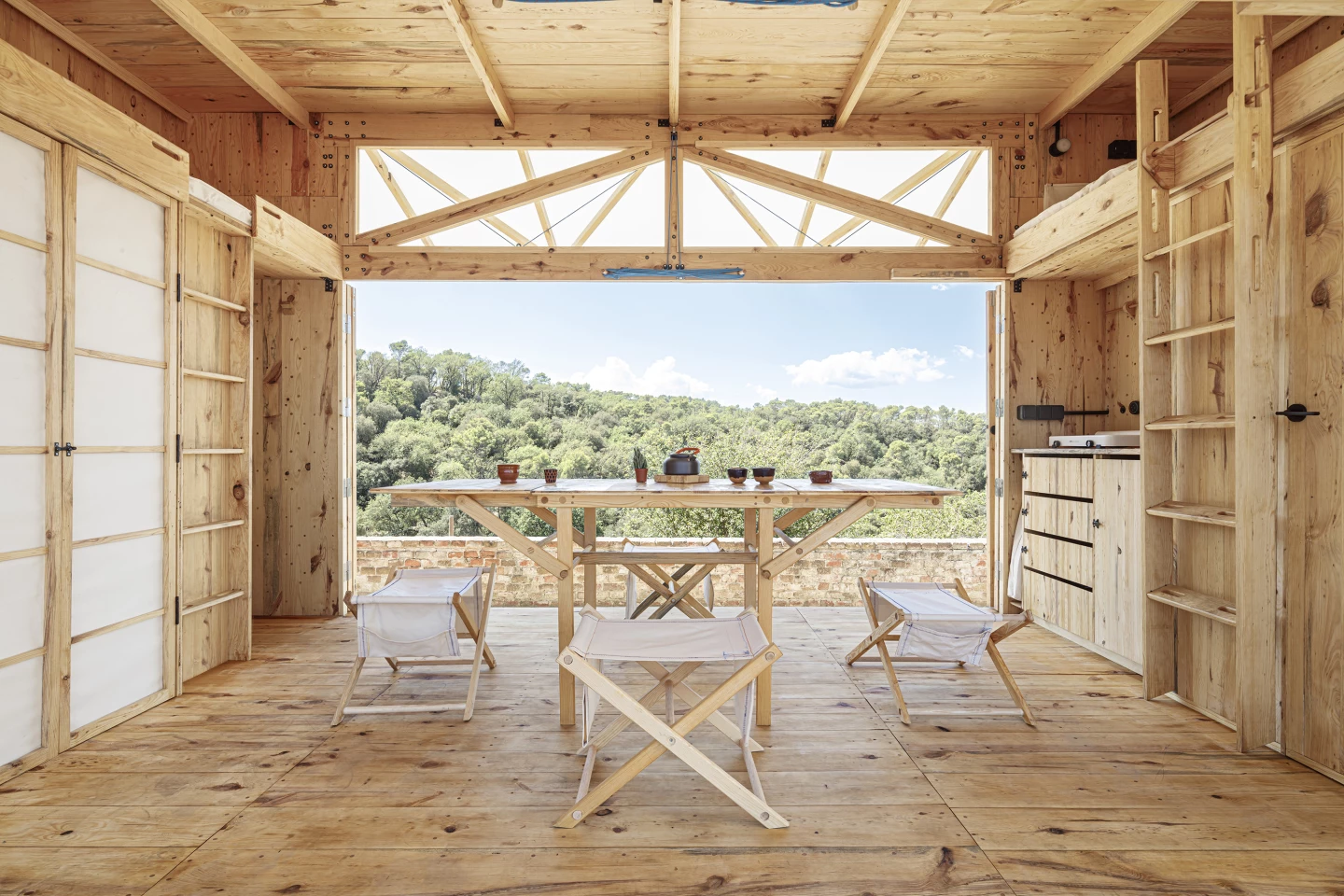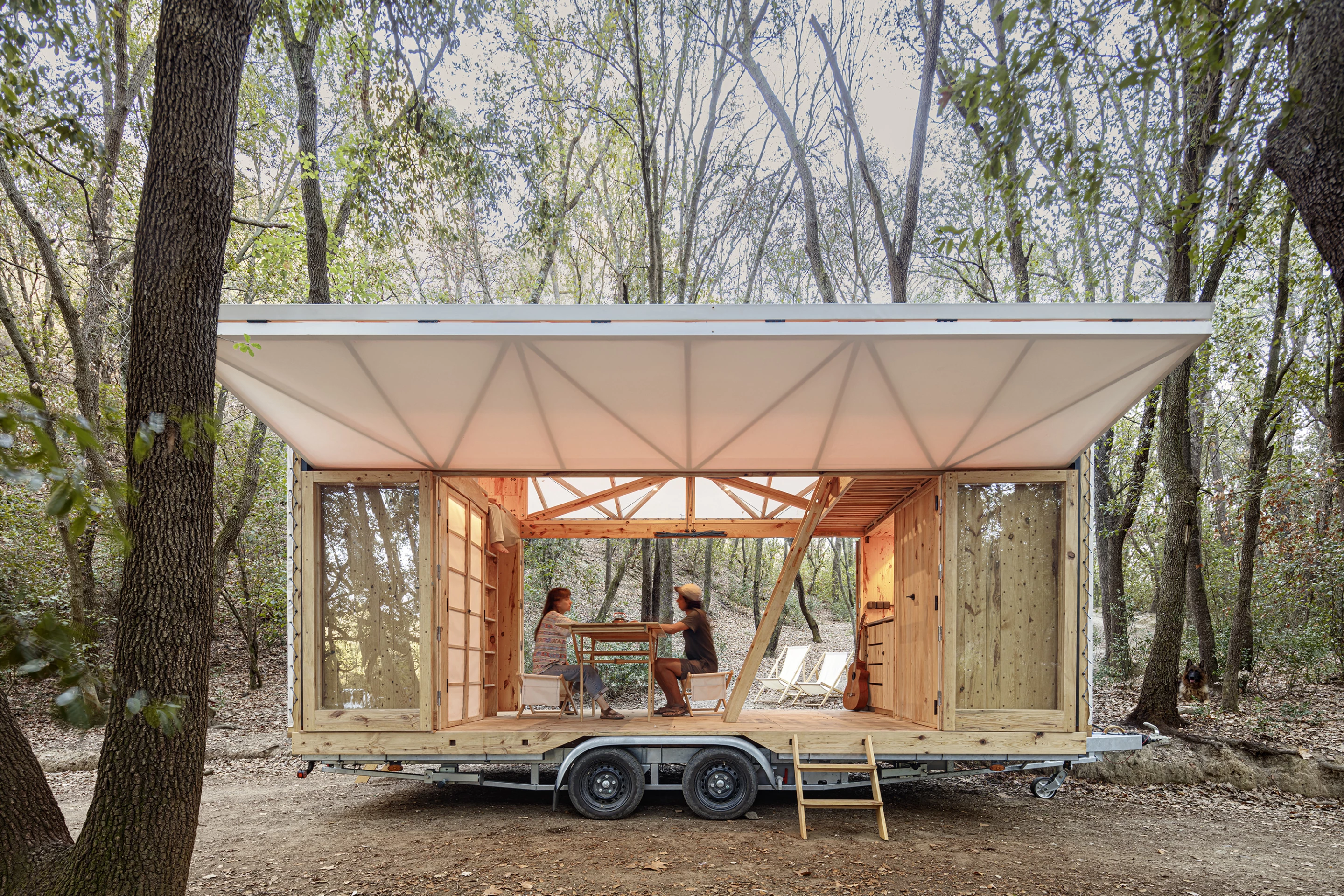You'd think that designers would run out of new things to do with tiny houses, but whether they're extending outwards or taking off the roof, there's always another interesting idea on the horizon. This latest example is named the MO.CA (or Mobile Catalyst) and offers food for thought with its space-saving interior layout that opens up to the outside with operable walls.
MO.CA was built by students and researchers at Spain's Institute for Advanced Architecture in Catalonia (IAAC) for their thesis. It's based on a double-axle trailer and has a length of 5.4 m (17.8 ft), so is a little smaller than Baluchon's recent Mirasol. Its diminutive size helps it meet local towing laws, which require the structure to stay under 3,500 kg (7,716 lb).
The house is primarily made from locally sourced cross-laminated timber (CLT), and its exterior is finished in lightweight water-resistant cotton. The interior layout is centered around the main living/dining area. When the weather is suitable, the fabric facades can be raised using a manual pulley system, to open up the home to the outside. Glass doors can also be optionally opened.
As with any operable facade, we'd have concerns about leaking and durability if it was a commercial product. That issue aside, it's an interesting idea and should help open up the small space to the outdoors nicely in the mild local climate.

The main living space is flanked by two areas that the team calls "Toolboxes." Toolbox A is the area closest to the trailer hitch, and contains a bathroom with shower, sink and toilet, plus there's an adjacent kitchen unit with a stove and a fridge. Over on the opposite side of the home is Toolbox B, which is simpler and just hosts storage space. Above both Toolboxes are two loft-style bedrooms reached by removable ladders that can be stowed when not needed.
The MO.CA runs totally off-the-grid. All power comes from a solar panel array on its roof, which is hooked up to a battery. There's also a composting toilet in the bathroom and a greywater recycling system to reuse water. Additionally, it can take on more water by inserting a hose and pump (with a built-in filter) into a river, lake or other suitable water source.
Source: IAAC











